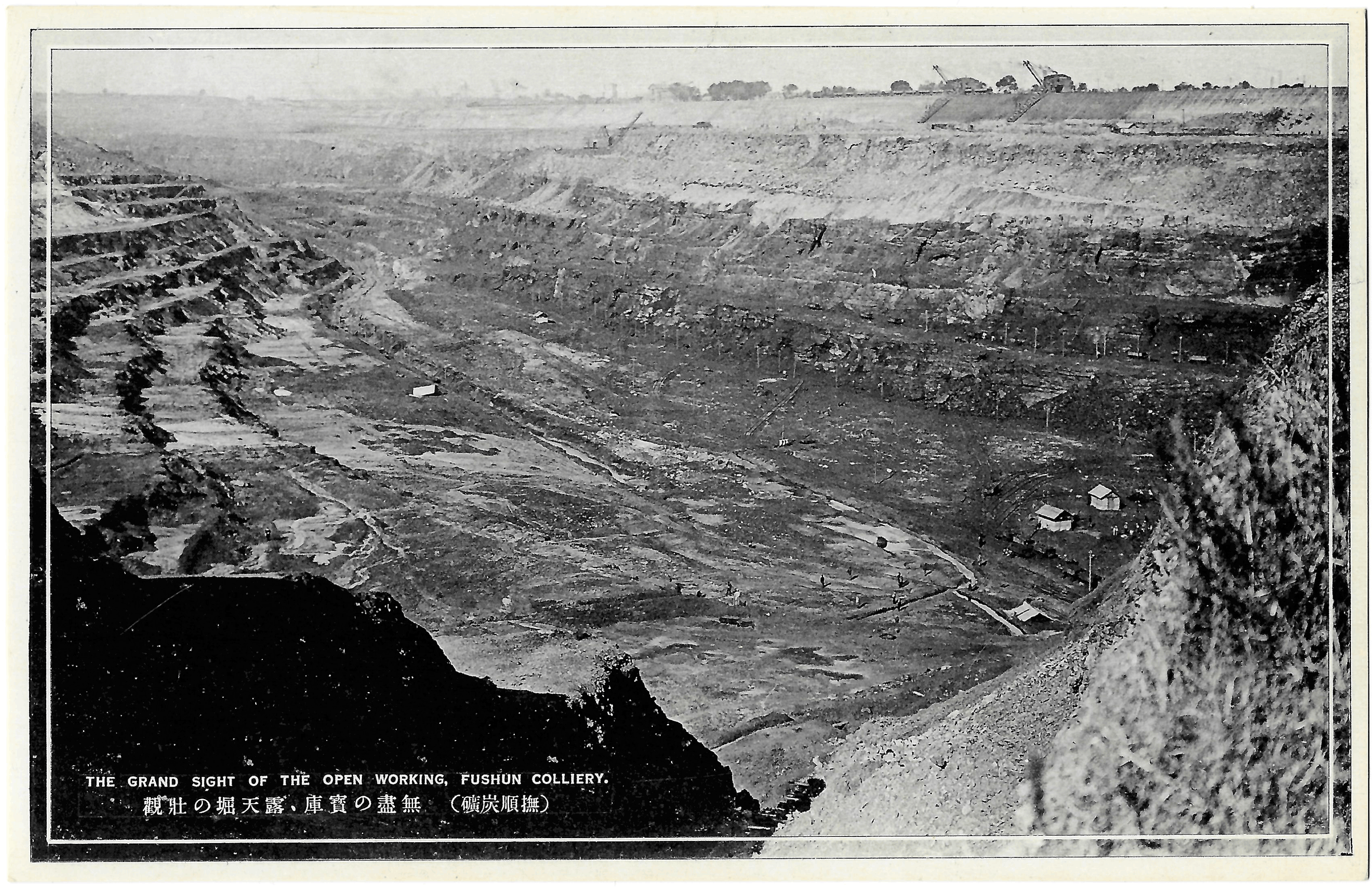The World in a Postcard
At five and a half inches by four, the picture postcard holds a world within it. The image is of a massive open-pit mine, as viewed from one edge of the excavation. Looking down into the depths, one sees a craggy face on one side and a series of large steps cut into the other. Dwarfed by the expanse of the cavity are several work sheds, power poles, train tracks, and, if one squints, human figures. In the distance, dragline excavators and the silhouettes of what are almost certainly plants to process the coal and shale mined from this site.

The postcard is captioned in both English and Japanese. The English text reads “The Grand Sight of the Open Working, Fushun Colliery.” This is a partial translation of the Japanese written below, which also contains the phrase “mujin no hōko” (無盡の寶庫), or “inexhaustible treasure house.” It is not clear why that phrase would remain untranslated, especially since this was an oft-repeated claim, but it sums up the sentiment that many Japanese in the first half of the twentieth century had towards the coal mined at this site in Manchuria. This belief in the bottomless bounty of Fushun coal had also informed the scale of operations that the colonial corporation that ran the mine brought to bear on its subsurface seams.
I picked up this postcard one summer from an old bookstore in Jinbōchō, a district in Tokyo known for its used book sellers and veteran publishing houses. It was one of a dozen or so that I would acquire over the decade that I spent researching and writing about Fushun for my recently published book, Carbon Technocracy. It was also one of thousands upon thousands of such postcards of industrial sites produced during Japan’s imperial era.
| Immutable Mobiles » |
